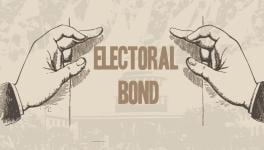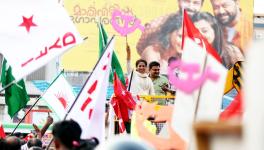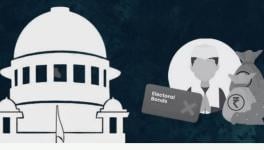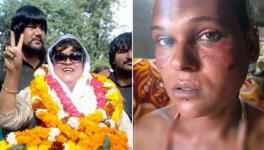Equipping India to Deal with Daunting Challenges
The Mumbai School of Economics Alumni Association celebrated its centenary year by organising a Special Centenary Address on ‘India’s 75th Year of Independence – Daunting Challenges Ahead’. The address was delivered by Dr Madhav Godbole, with Dr S.A. Dave (Founder Chairperson, Securities and Exchange Board of India and later UTI Mutual Fund) as Chairperson on March 26. The Leaflet reproduces Dr Godbole’s lecture in three parts.
This is the first part.
Introduction
I was fortunate to have been a student in the Department of Economics during its golden years when the Trimurti comprising Dr. M. L. Dantwala, Dr. D. T. Lakdawala, and Dr. P. R. Brahmanand, with their scholarship and all-India fame, gave the Department a special glow. After my M.A., I was a Ph.D. fellow under Dr. Brahmanand but had to shift to Delhi for training and on my joining the Indian Administrative Service in 1959. Thereafter, I returned to Mumbai only in 1976 when, again, I enrolled for and completed my Ph.D. under the guidance of my highly respected guru Dr. J.C. Sandesara. The discipline and rigour, as a researcher, instilled in me by Dr. Sandesara has been a life-long gift and has helped me in writing, over the years, 27 books, in English and Marathi, and over 500 articles on public policy issues. I was fortunate that Dr. Lakdawala wrote a foreword for my book, ‘Public Expenditures in Maharashtra—A Case for Expenditure Strategy’, published in 1989. Against this background, I consider it a privilege to deliver this special centenary lecture. I am indeed happy that Dr. Surendra Dave, my batchmate who has had such an illustrious career and big name in the financial sector, has kindly agreed to preside over the lecture. His gracious presence makes the event so special.
This year is the 75th anniversary of India’s Independence. As a dynamic, noisy, argumentative and aspirational democracy with an enviable demographic dividend, it is faced with a number of daunting challenges. And this is but natural. I propose to deal with only a few of them in this lecture—some at length and others somewhat briefly, due to constraints of time.
Long Way from Jawaharlal Nehru’s India
India was fortunate in having Jawaharlal Nehru as India’s first prime minister. It is only because of his foresight and vision, strongly supported by Gandhiji and Vallabhbhai Patel, that India became a secular parliamentary democracy, with adult franchise. Even though Dr. Rajendra Prasad, President of the Constituent Assembly, and some others were keen on laying down some minimum qualifications for voting rights, India chose to adopt universal adult franchise which meant that every Indian above the age of 21, irrespective of gender, religion, race or caste or education would be allowed to vote. (The voting age was lowered to 18 in 1988.) Women had to fight for long years for voting rights in a number of European countries, and the United States. India gave this right to women from the very first day of its Independence.
Nehru strongly resisted proposals for giving longer time for preparations which were necessary for holding the first general election. As a result, Independent India’s first general election for Parliament and state legislatures was held over a long period from October 25, 1951 to February 21, 1952. The Congress was the dominant party, but 53 other political parties participated in this gigantic exercise. A total of 1,949 candidates, 533 of them being independent, competed for 489 seats in the Lok Sabha. Of the 173 million eligible voters, 106 million voted. This celebration of democracy has been continuing uninterrupted since then, except for the Emergency declared by India Gandhi during the 21- month period from 25 June 1975 to 21 March 1977.
The elections of five state legislative assemblies which concluded peacefully on 7 March 2022 were the latest milestone in this long journey. The election results declared on 10 March 2022 brought the Bharatiya Janata Party [BJP] to power in four states, with Punjab, an erstwhile stronghold alternatively of the Shriromani Akali Dal [SAD] and the Congress, being swept off its feet by Aam Aadmi Party [AAP]. Such strong and growing support for the BJP in Hindi heart-land has serious adverse implications for India retaining its secular character. While SAD, the Sikh religion-based political party, the second oldest party in India after the Congress, was decimated completely, the rapid rise of Hindu religion-based party, the BJP, showed that India is unmistakably moving towards the objective of its founder, the Rashtriya Swayamsevak Sangh [RSS], of declaring India a Hindu rashtra (nation). It was disconcerting to see the weaknesses and rapid decline of secular political parties, including, in particular, the Congress party. (Interestingly, Praveen Swami has recalled how Prime Minister Indira Gandhi addressed a rally at the Sannihit Sarovar, the reservoir in Kurukshetra. Ahead, the prime minister warned, invoking the Mahabharata, lay a dharmyudh, a holy war. A few days earlier, she had claimed “Hindu religion and culture” were in danger.) The defeat of most Muslim candidates, fielded by some of the secular parties, showed the direction in which the wind is blowing.
There is no single universal definition of democracy and its variants differ from country to country. It is note-worthy that India’s multi-party democracy boasts of adult franchise, free and fair elections at regular intervals and peaceful transfer of power. This was true even after the short spell of Emergency, referred to above. Not many democracies, including the United States, can pass these tests, looking to the laws passed by a number of states to restrict the enrolment of African-American and Latino voters and those belonging to the poor and neglected sections of society. Donald Trump’s term marked yet another watershed. He refused to accept the legitimacy of his defeat in the re-election bid in 2020 and had the temerity to encourage a riotous and shameful attempt by his followers to take-over Capitol Hill.
But, Prime Minister Narendra Modi’s statement at the ‘Summit for Democracy’, hosted by President Joe Biden in December 2021, that democracy in India has delivered is far from true.
In its lead article entitled India’s democracy is not as healthy as this month’s [five state assembly] elections make it seem, The Economist concludes that “India is the planet’s most populous democracy. By upholding political freedoms for 75 years, bar a two-year hiatus under the Congress in the 1970s, it has set a heartening precedent for the developing world. But these days it is looking less and less like a model. In a world where authoritarian China seems to grow stronger by the day, it has never been more important for India not just to hold elections, but to repair the underpinnings of its democracy, too.” (The Wire, 11 February 2022) One cannot question this assessment of Indian democracy.
Non-functional Parliament — urgency of parliamentary reforms
The greatest disappointment of Indian democracy is the undermining of Parliament which Nehru strived so hard to make the most powerful organ of the state. My book, ‘India’s Parliamentary Democracy on Trial’ (2011), brings this out fully. Since the writing of the book, the decline has been unbelievably steep. On taking over the reins as Prime Minister in 2014, Narendra Modi, on his first entry into Parliament, had, on bended knees, bowed in reverence at the footsteps of Parliament— a powerful image blazed the world-over. But this gesture has not led to empowerment of Parliament. And now an imposing new Parliament building is under construction which is due to be inaugurated in 2023. If only such a majestic monument alone could bring in real parliamentary democracy.
Even before the COVID-19 pandemic, the number and duration of the sittings of Parliament each year had declined. It was no longer the highest forum for holding the government accountable. Parliament’s most important committee, namely, the Public Accounts Committee [PAC], has lost its pre-eminent position. The prestigious institution of Joint Parliamentary Committee [JPC] has lost public esteem and credibility by its brazen white-washing in major enquiries, namely, the Bofors, the securities scam, and the 2-G scam. Parliament is by-passed by successive governments on major issues. Walk-outs, boycotts and disruptions have become the order of the day. Even boycott of the entire session by the Opposition does not come as a surprise any longer. Physical show of strength has become more important than the capacity to discuss and persuade by erudite and studied debates. Even national security issues such as Chinese aggression in Ladakh, and the misuse of Pegasus spyware did not come for discussion in Parliament. The Congress Member of Parliament, Manish Tewari, has claimed that since 2020, the Lok Sabha Secretariat had disallowed 17 of his questions on Chinese incursions in India and the government’s handling of the situation. The prolonged farmers’ agitation in Punjab against the three farm laws, which were enacted by promulgation of Ordinances, did not come for discussion in Parliament. This brings out that India is no longer a Parliamentary democracy, which is a part of the basic structure of the Constitution. There could not have been a greater fraud perpetrated on the Constitution.
Even with his deep and abiding faith in democracy, Nehru was conscious of the dangers of majoritarianism. His liberal mind revolted against the idea of minorities suffering at the hands of the majority. Majoritarianism has been in full sway from time to time such as during the prime ministership of Indira Gandhi. The same is true thereafter, including during the Modi regime since 2014.
In view of the continuous devaluation of Parliament over the years, irrespective of which political party was in power, the underlying issues require urgent surgical treatment. The situation in regard to state legislatures is even worse. It is important to note that the functioning of Parliament has not been scrutinised by its stake holders during the last seven decades since the adoption of the Constitution. The series of suggestions I had made in my book on parliamentary democracy, way back in 2011, have remained unattended, though over a decade has elapsed. Same is true of other eminent studies on the subject.
Mention may be made of some important suggestions which would have significant welcome impact on the functioning and image of Parliament: enacting a law on political parties; statutorily laying down an annual calendar for Parliamentary sessions to ensure that Parliament meets for the prescribed number of days in a year; adoption of the rule of no work, no pay; dividing session time equitably between the ruling and Opposition parties; ensuring independence of the Speaker and adopting a convention to give the post of Deputy Speaker to the Opposition; enacting a law to ensure public accountability of the actions of the ‘remote control’ (an Indian innovation) as seen in the working of Balasaheb Thackery during the chief ministership of Manohar Joshi in the Shiv Sena-BJP rule in Maharashtra during 1995-1999, Sonia Gandhi during Manmohan Singh’s prime ministership at the Centre from 2004-2014, and Lalu Prasad Yadav during the chief ministership of his wife Rabri Devi in Bihar (2000-2005); creating a budget office for assisting parliamentary committees to scrutinise the annual budget and supplementary demands more closely; reforming the committee system to make it effective, transparent and accountable; incorporating a ‘sunset’ provision in every legislation so that it will come up for a review at the designated time; ensuring that every legislative bill is referred to the select committee for scrutiny; reasserting the role of the PAC and JPC as credible instruments of public accountability; re-enacting a law laying down minimum years of residence in a state as a qualification for membership of the Rajya Sabha; holding public hearings on important issues; creating a new joint standing committee on security and intelligence to keep a closer watch over the work of these organisations, and making a constitutional amendment for review of the performance of Parliament and state legislatures, every ten years. Pressure of public opinion will have to be exerted to make political parties bring in these changes as soon as possible.
Secularism — a withering dream
As in the case of parliamentary democracy, the constitutional mandate on secularism is also being increasingly neglected, particularly after the ascendance of the BJP to commanding heights and coming to power of the Narendra Modi government in 2014. This is justified by the BJP on the specious plea that it does not believe in making any distinction between citizens on the basis of religion. But by the same logic, to give just one example, scheduled caste converts to Christianity, Islam and Jainism should not be denied the benefits of reservations, which were extended by the Congress Party to the Sikhs and Buddhists in the 1950s. The report of Justice Ranganath Misra Commission (2006), which had recommended this, was just shelved by Manmohan Singh’s UPA government and thereafter by the NDA government under Modi.
The Supreme Court had in S.R. Bommai v. Union of India [1994] 2 SCR 644, declared secularism as a part of the basic structure of the Constitution. But, just a year later, the Supreme Court in the Hindutva case (Manohar Joshi vs. Nitin Bhaurao Patil & Anr. on 11 December 1995), diluted the principle. The court said, no precise meaning can be ascribed to the terms ‘Hindu’, ‘Hindutva’, and ‘Hinduism’. The court further held that the words ‘Hinduism’ and ‘Hindutva’ are not necessarily to be understood and construed narrowly and that the term ‘Hindutva’ is related more to the way of life of the people in the subcontinent. More disturbing was the contention of the Supreme Court that the word ‘Hindutva’ is used and understood as a synonym of ‘Indianization’, that is development of a uniform culture by obliterating the differences between all cultures co-existing in the country. As was to be expected, the BJP election manifesto of 1996 used the judgment to assert that “the Supreme Court, too, finally, endorsed the true meaning and content of Hindutva as being consistent with the true meaning and definition of secularism”.
Four months after the Hindutva Judgment was delivered, a three-judge bench of the Supreme Court, on April 16, 1996, asked for the setting up of a larger Bench to hear the matter “since the decision thereon impinges upon the purity of the election process and requires to be decided so that all the questions arising in the present appeal could be decided authoritatively and expeditiously”. (The Indian Express, 3 January 2017) But, though nearly three decades have elapsed since the pronouncement of the decision, this judgment has still not been reviewed. This brings me to the importance of setting up a constitutional division of the Supreme Court to attend to such matters on a priority.
In the light of the experience of working of secularism, I have been advocating setting up of a Secularism Commission by amendment of the Constitution. (‘Good Governance Never on India’s Radar’, 2014, pp. 166-167) I believe that merely incorporating the precept of secularism into the Constitution is not enough. What is important is its operationalisation. For example, provisions of the Indian Penal Code prohibiting hate speeches under Sections 153, 153A and 295A are flagrantly disregarded with the police refusing to take cognisance of such violations, or the state government refusing to give consent for taking action or the state governments withdrawing such cases from the courts for political reasons. Refusing residential accommodation to Muslims is a common practice. Sale of properties by Muslims is also often difficult. Even in matters of employment, often discrimination is made against religious minorities. Where is the citizen to go for redressal of such grievances? A high-powered constitutional commission can be asked to take over this responsibility. The decisions of such a commission should be binding on everyone, including all sections of society, institutions, media, professional bodies, private sector and the government. Appeal over the decision of the Commission should lie to the full bench of the Supreme Court. It is unfortunate that even the so-called secular political parties have not evinced any interest in pursuing the proposal.
Separation of religion from politics
The importance of the separation of religion from politics was recognised by the Constituent Assembly (Legislative) by approving in 1948 the resolution moved by Ananthasayanam Ayyangar, who later became the Speaker of Lok Sabha. It was passed almost unanimously, with only one member opposing it. Jawaharlal Nehru had strongly supported the resolution and had assured that expeditious legislative steps would be taken to enact a law for the purpose. I have always wondered why the Constitution did not make any provision for the purpose. Even a mention in the Directive Principles of State Policy could have helped. Was it because of opposition from within the Congress party? In his 17-year-long tenure as prime minister, neither Nehru, nor later, his daughter, Indira Gandhi, who has the distinction of bringing about the maximum number of constitutional amendments, including the rewriting of the Constitution, nor her son Rajiv Gandhi took any steps to implement the resolution, though they had two-thirds majority in Parliament and more than half the states were with the Congress party, to get the requisite constitutional amendment passed. Is it because these all-powerful leaders, with such an overwhelming national mandate, were not sure of the support for the move from within their own party? These are disconcerting questions but must be asked and answers found for a correct understanding of history.
After the demolition of the Babri Masjid in December 1992, Prime Minister P.V. Narasimha Rao was keen to rehabilitate the image of his government as a secular government. Towards this end, a constitutional amendment bill and a bill to amend the People’s Representation Act were introduced in Parliament in 1993 to separate religion from politics. But the Congress party did not want to share the credit for this move with other political parties and no prior consultations were held with them to arrive at a consensus. As a result, the bills were strongly opposed by all non-Congress parties. Unfortunately, the media, jurists and intellectuals too joined the bandwagon in opposing the bills and the bills had to be withdrawn, creating doubts about India’s real commitment to secularism. I have discussed these aspects fully in my book, ‘Secularism-India At A Crossroads’ (2016).
Dr. Madhav Godbole is a former Home Secretary and Secretary, Justice, Government of India.
Get the latest reports & analysis with people's perspective on Protests, movements & deep analytical videos, discussions of the current affairs in your Telegram app. Subscribe to NewsClick's Telegram channel & get Real-Time updates on stories, as they get published on our website.
























